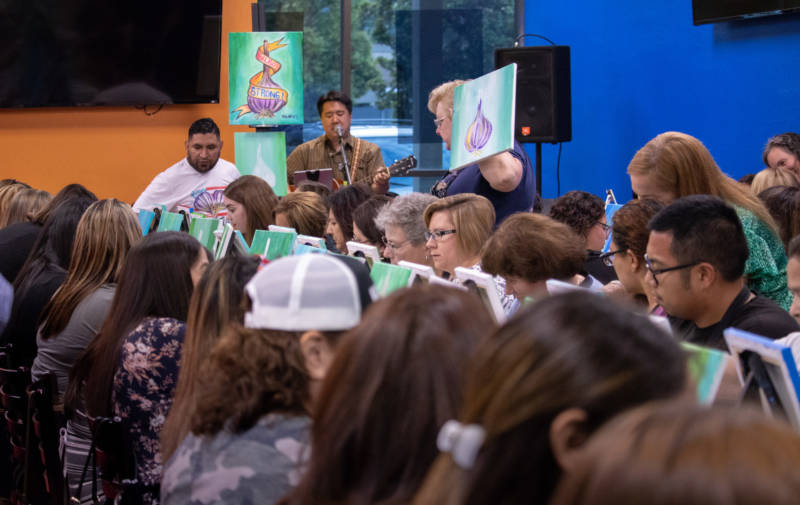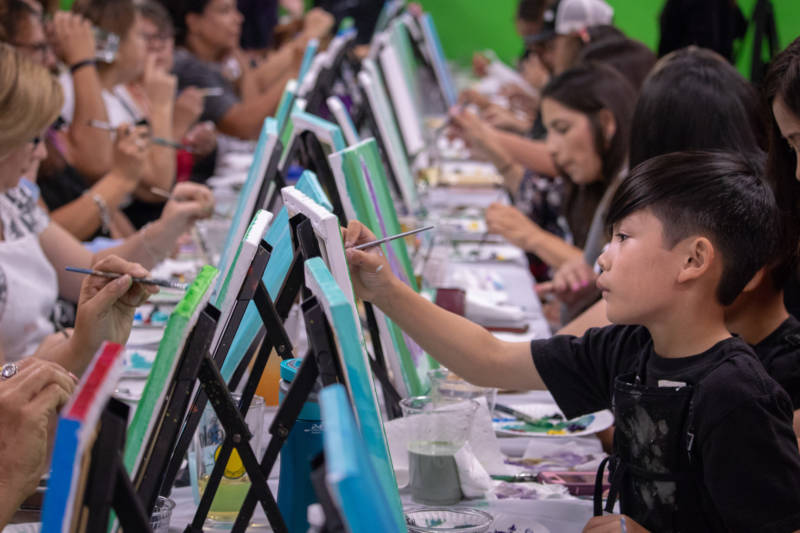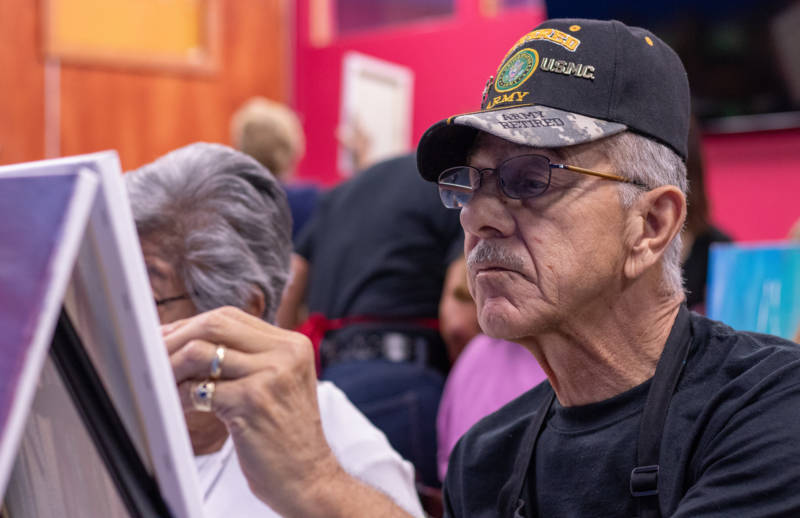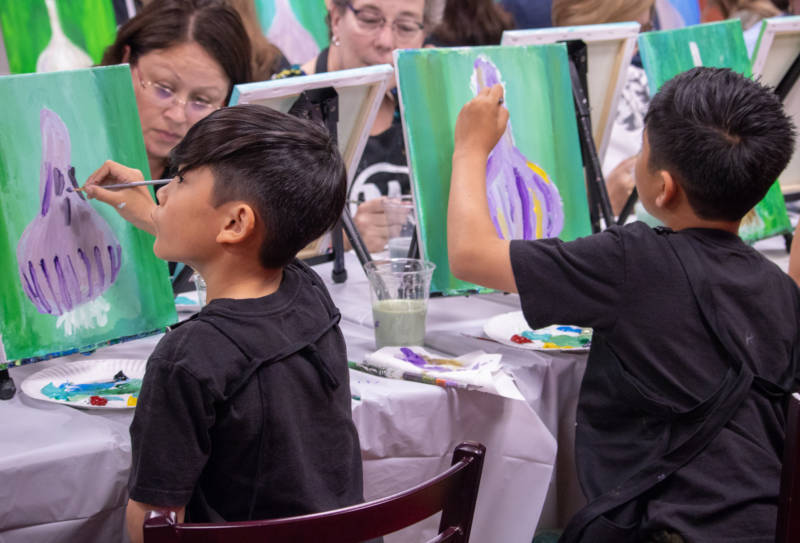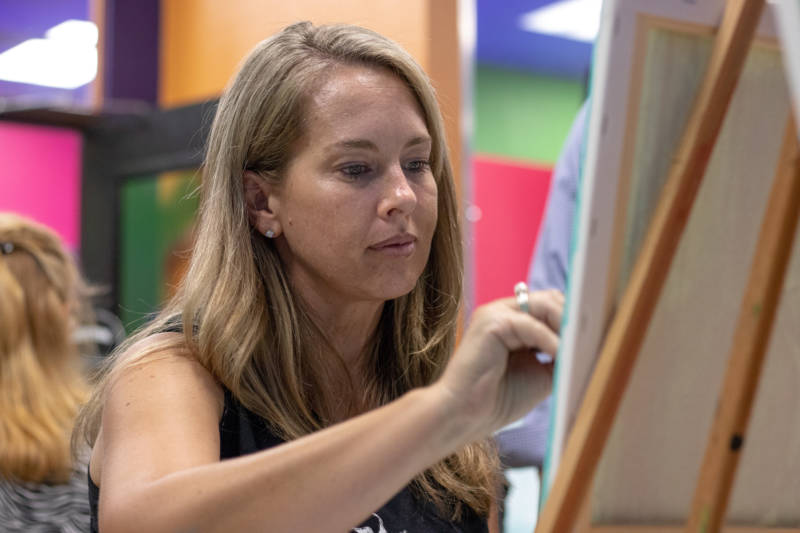Paintbrushes in hand, blank canvases at the ready, and plates dotted with splashes of acrylic paint in hues of aqua, sea green, purple, yellow and more, a group of all ages gathered for an evening of art and healing a week after three people were killed in a mass shooting at the Gilroy Garlic Festival.
Organized by local artist and Gilroy native, Ignacio “Nacho” Moya, attendees tried their hand at replicating or interpreting his painting of a garlic bulb, an important crop and symbol to the community, wrapped in a ribbon reading, “Gilroy Strong.”
“This paint party is for you guys to have fun, relax and enjoy and stay very positive,” Moya, 37, told about 70 people who gathered at a local pizzeria last Monday for the sold-out fundraiser. “This is going to be very therapeutic for us. Art can heal, art can help you.”
Proceeds raised from the event will go to survivors, he said.
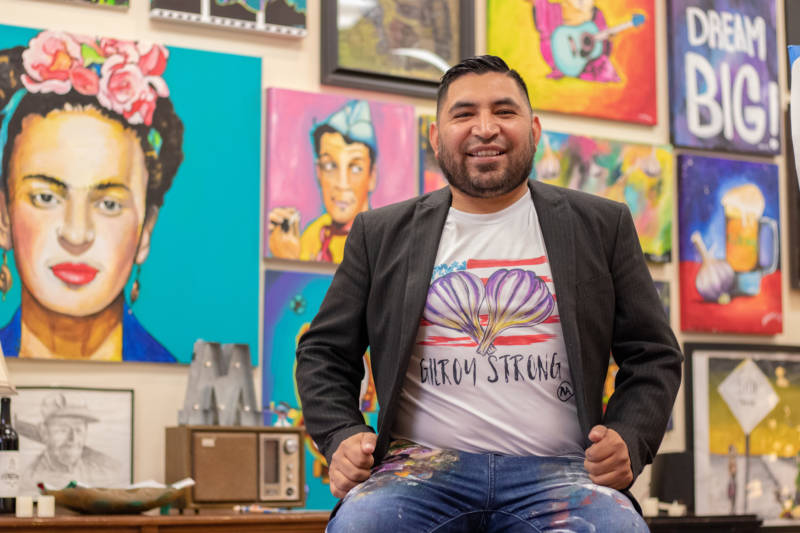
Moya, who grew up in Gilroy and now owns a local art studio, said he got the idea for a fundraiser after painting a banner with two garlic bulbs — in the shape of a heart — for a vigil the day after the shooting, which left three people, including two children, dead.
The warm and emotional response he received to the artwork, including one person who Moya recalled saying, “you're healing the community through art,” showed him he had a part to play in the local recovery.
